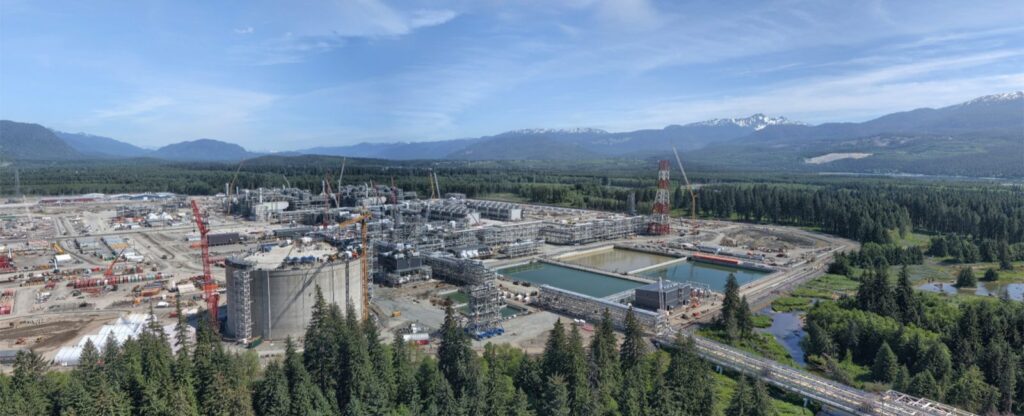Aug 09, 2018
Getting the existing port ready for larger vessels
Share
LNG Canada is undertaking some seasonally sensitive work this summer to put the project in the best position to meet schedule requirements should LNG Canada’s Joint Venture Participants take a Final Investment Decision later in 2018.
We continue to advance the project over the summer to ensure the project is well positioned if there is a positive final investment decision. As part of our summer activities that we announced on June 28, 2018, we’ll soon start work to get the existing port ready for larger vessels. This seasonally-sensitive work in the Port of Kitimat helps us maintain the overall project schedule.
LNG Canada understands the importance the community places on the coastal waters off Kitimat. As we begin our marine and dredging activities, we will work with the community to address any unexpected effects of this work taking place over the summer.
The dredging work LNG Canada will be doing is designed to increase the depth of the berthing areas in the Port of Kitimat to ensure safe passage of vessels. This work involves the removal of sediments and other material from the bottom of bodies of water.
The excavated dredge material will be disposed of appropriately. Hazardous dredge material will be treated at the former Eurocan wharf and transported offsite to an approved storage facility. Contaminated dredge will be stored at the Rio Tinto permitted disposal site or treated and transported offsite. Dredge that meets industrial fill criteria will be used on site. Clean material will be disposed at sea at a permitted location.
Why the work needs to happen
• LNG Canada has agreed to build a new wharf (Terminal A Extension) for Rio Tinto in exchange for Rio Tinto’s Terminal B (the old Eurocan wharf). The location for
LNG Canada’s proposed export terminal coincides with the current location of Rio Tinto’s Terminal B.
• Before construction of Terminal A Extension can begin, some dredging work must be completed. Dredging is the removal of sediment from the bottom of bodies of water.
• LNG Canada must increase the depth of the future Rio Tinto Terminal A extension and LNG carrier berthing areas to ensure safe passage of larger vessels.
• Ensure the Material Offloading Facility is available for import of equipment and goods.
• LNG Canada needs to take advantage of a period of limited fish migration during the summer.
What the community can expect
Marine activity: Dredging and heavy lift vessel
• Dredging includes the mobilization of a small workforce and the arrival of a heavy-lift vessel delivering the necessary dredge and supporting vessels.
• The semi-submersible heavy-lift vessel, expected to arrive in the Port of Kitimat mid-August, is designed to move very large loads. It takes on water to allow the load — dredge and supporting vessels — to be floated over the deck.
• Dredging-related activities will occur 24-hours a day due to environmental and seasonal time constraints. There will be minimal noise related to dredging and transportation of the dredge material.
• Limited impact to local marine traffic from dredging activities and safety zones around dredgers.
• Third-party marine traffic is advised to respect the marked safety zone to ensure everyone’s safety.
Onshore activity
• Onshore construction works in the marine terminal to develop the onshore disposal areas.
Contractor
• Boskalis will execute dredging and Triton Haisla will conduct environmental monitoring, as well as crab and fish salvage.
What we are doing to reduce impacts
• Removing fish and crabs from the areas prior to dredging and disposal.
• Dredging only during low-risk periods for salmon and other fish.
• Monitoring for marine mammals during marine dredging and marine construction.
• Monitoring impact of dredging (suspended sediment) and compliance reporting to relevant authorities.
• Communicating with authorities and marine users about our shipping activities and the timing of our marine activities for safe transport.
• Removing legacy contamination in front of Rio Tinto’s Terminal B to improve conditions for marine flora and fauna after dredging is complete.
Community feedback
We are committed to keeping the community informed of our activities through a variety of communication methods to provide accurate and timely information.
If you have any questions or concerns, email us at feedback@lngcanada.ca or call us at 250 639 3229.


